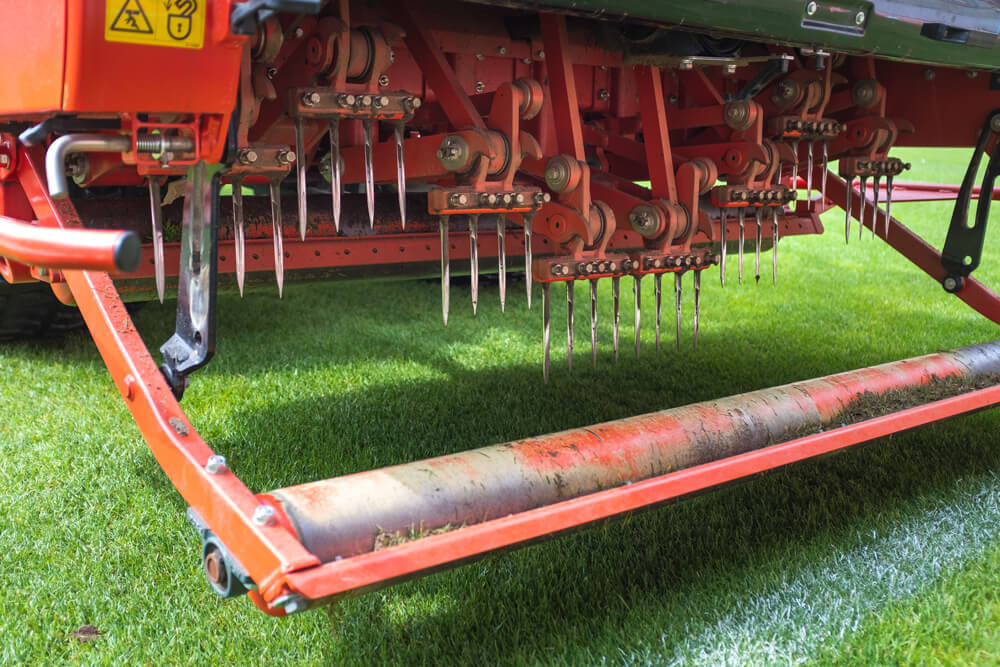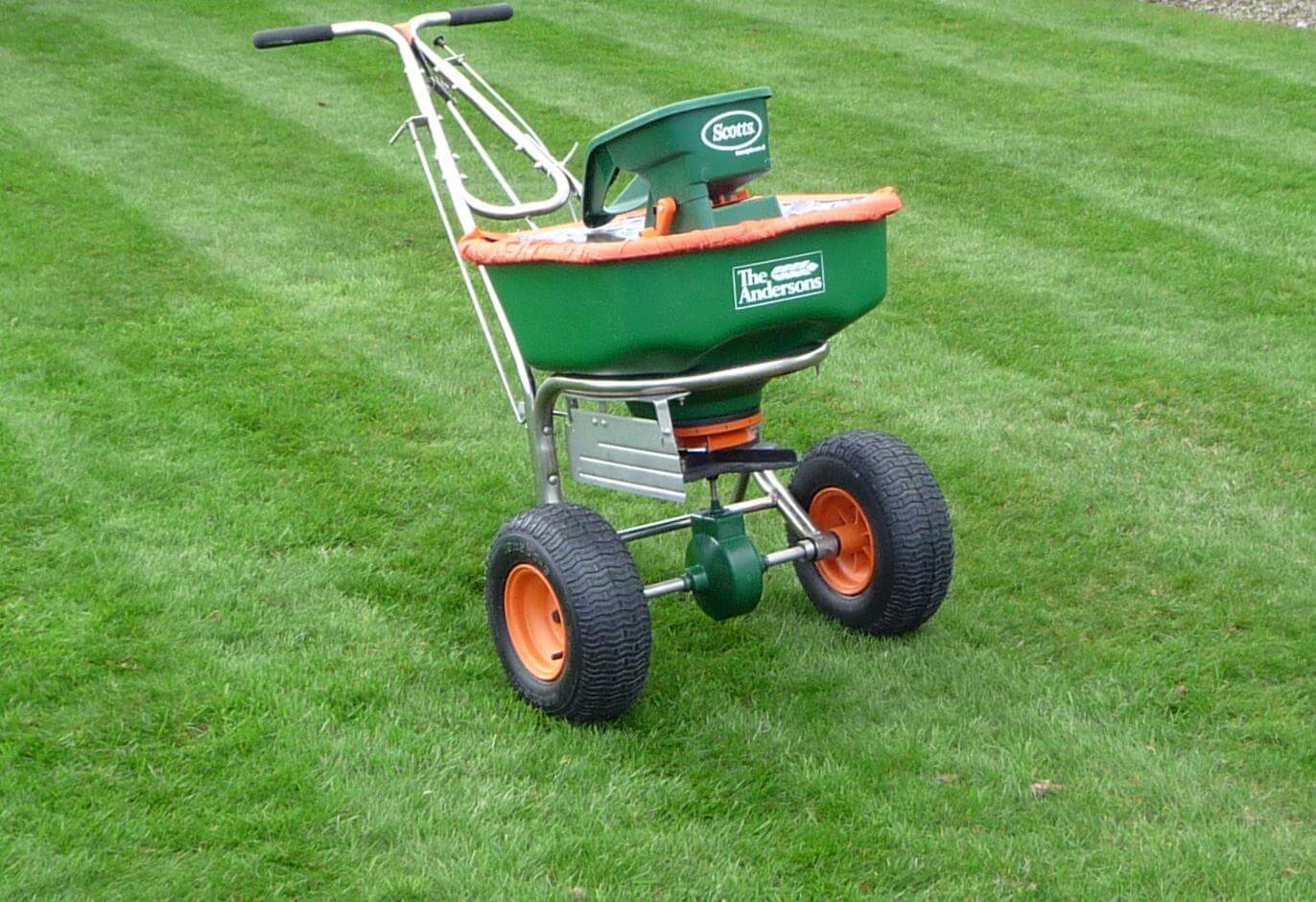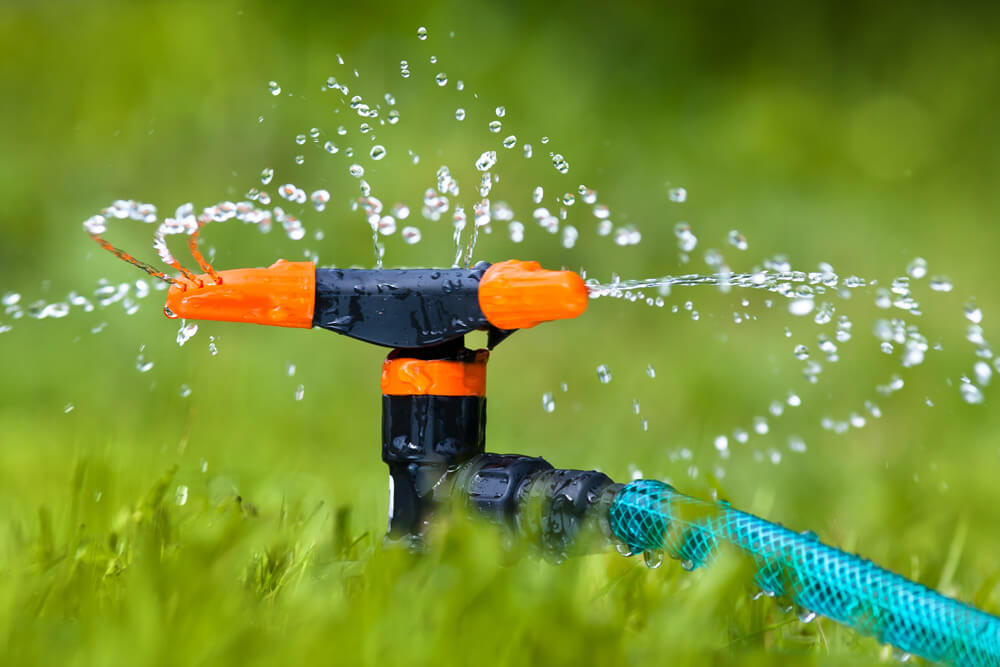Drought recovery process starts from the bottom of the lawn up
Most of the lawns around the area I work in (Belfast) are growing on clay soils. Clay soil has some really good points. It’s strong, it retains nutrients well and when weather conditions are right, it’s easy to work with. On the downside, clay can be cold and wet in winter and in summer it can bake to a hard dry crust. Once dry it’s very hard to reintroduce moisture. That’s a plus point if you want to make it into pots and plates. Not so good though if you are trying to grow a lawn.My starting point in a drought recovery program is the soil. I want to break that hard surface and get water and nutrients down to where the roots are. Spring and autumn renovations involve using a hollow tine aerator. The hollow time aerator that I use to relieve compaction is a bit harsh to use where plants are already stressed. So for the first stage of drought recovery, I like to go over the lawn with a solid tine aeration machine.
Golf courses and sports stadiums regularly use solid tine aeration to encourage better drainage, healthy root growth, speedy recovery and drought tolerance in the playing surface.
You could do the same thing with some of those sandals that look like upside down hedgehogs. I’m not sure that they will penetrate the soil as far as the machine but they will definitely be a help.How to rehydrate the soil
Solid tine aeration or spiking makes small-diameter holes in the lawn without removing any soil or causing compaction. The aim of solid tine aeration in a drought recover program is to achieve two things.First, it opens up the soil profile, piercing the hard baked surface of clay soil and allowing water to seep deep into the soil.Secondly, I believe that it wakes the roots up. It’s inevitable that a small proportion of the roots will be pierced by the spikes. That wakes up the plant’s self-healing system and gets fluids circulating again taking nourishment from the tips of the roots to the tips of the leaves and stimulating growth. I suppose it’s a little bit like horticultural acupuncture.A nutrient boost will help speed up drought recovery
Once the surface of the soil has been opened up and is permeable, it’s time to offer up a nutrient boost. The plants have been partially dormant for a while and they need a good breakfast. As a lawn lover, I’m looking for a deep green colour with a thick velvety sward.Between March and the end of August I recommend a nitrogen rich feed to really fuel growth. As autumn approaches though, I’m careful to moderate the proportions of nitrogen. Too much lush growth at the end of the season can lead to fusarium patch disease, especially on a lawn that is already weakened by drought.It’s really important to make sure that lawn feed is watered in. If it sits on the surface of the leaves it can scorch and burn them. As the plants are convalescing after a drought, they don’t need anything else to deal with. If you are applying feed yourself, be very careful to get the rate right and to apply fertiliser evenly. If the soil is very dry, getting water to soak into it rather than run off the top is a bit of a challenge especially on clay soils! A trick I use is to apply a wetting agent as you water in the feed.
If you are applying feed yourself, be very careful to get the rate right and to apply fertiliser evenly. If the soil is very dry, getting water to soak into it rather than run off the top is a bit of a challenge especially on clay soils! A trick I use is to apply a wetting agent as you water in the feed.What is a wetting agent and how does in help with your lawn’s drought recovery?
A wetting agent is a simple chemical that breaks the surface tension on water droplets so that they are absorbed into the soil or the leaf instead of sitting on top like a shiny bead, a bit like the way washing up liquid breaks up the surface tension in your kitchen sink. When you break the surface tension of the droplets, they spread far more thinly and the water can work its way into the soil. This can help with water conservation as the water you put on has more chance of seeping into the soil before it can be evaporated by the sun.Tonics for greener grass and healthier soil
To really speed up recovery, you can’t beat a good old lawn tonic. I’m a big fan of this seaweed treatment. The plants absorb it quickly and because it’s rich in Iron and other minerals it will help the plants produce the green pigment chlorophyll. Chlorophyll not only makes the plant look green and healthy, it’s vital for photosynthesis. Photosynthesis is the chemical reaction that turns sunlight into plant energy so having plenty of iron will help plants recuperate after a drought.For a super-boost, it’s well worth mixing in a biostimulant. Greenkeepers across the world are embracing the benefits of humic acid. You might have heard of humus. (not the garlicky dip) Humus is organic matter that has been partially broken down by minibeasts and microbes. Its a bit like compost but the particles are much smaller. It’s part of the natural carbon and nitrogen cycles and helps improve the nutrient content of the soil.Humic acid is a component of humus. What it does is capture soil nutrients and hold them within the soil where they are available for plants. Without humic acid, some nutrients can be washed out of the soil by heavy rain or by irrigation. Not only is that bad for your pocket because of the wastage, it’s potentially harmful to the environment if it gets into ponds, streams and rivers. Adding a biostimulant containing humic acid helps you get better value from lawn feeds and fertilisers whilst doing your bit to protect the natural balance of our waterways.Don’t forget to apply tonic to the other plants in the garden too – they will also have been affected by the drought and they’ll be glad of the boost.Watering your lawn to speed up recovery
 Those three simple treatments – spiking, feeding and applying tonic should set your lawn well onto the road to recovery. However, for treatents to be truly effective, your lawn needs to be well hydrated.If you have a hosepipe and you have the time, it’s well worth spending an hour or so a couple of times a week to make sure that the soil beneath your lawn is really moist. There should be no need to water every day. Especially if you spiked the lawn to a good depth. If the water can sink really deeply into the soil your lawn will be OK. In fact the plants will be stronger as they are encouraged to push their roots down further towards the natural water table.If you can, water either first thing in the morning or last thing at night when the sun is low in the sky.
Those three simple treatments – spiking, feeding and applying tonic should set your lawn well onto the road to recovery. However, for treatents to be truly effective, your lawn needs to be well hydrated.If you have a hosepipe and you have the time, it’s well worth spending an hour or so a couple of times a week to make sure that the soil beneath your lawn is really moist. There should be no need to water every day. Especially if you spiked the lawn to a good depth. If the water can sink really deeply into the soil your lawn will be OK. In fact the plants will be stronger as they are encouraged to push their roots down further towards the natural water table.If you can, water either first thing in the morning or last thing at night when the sun is low in the sky.